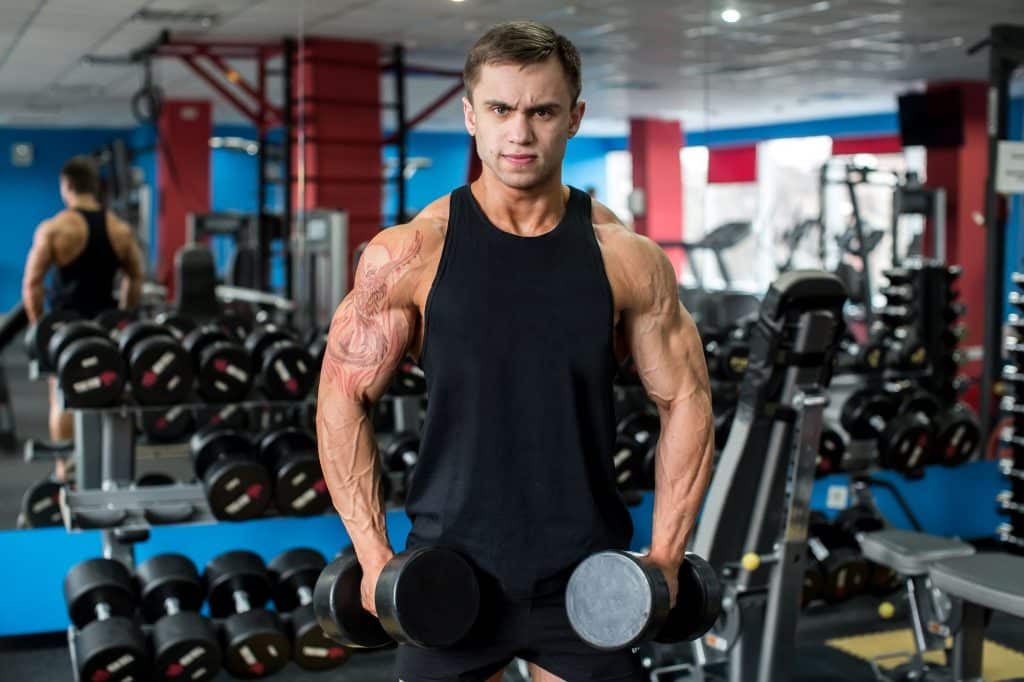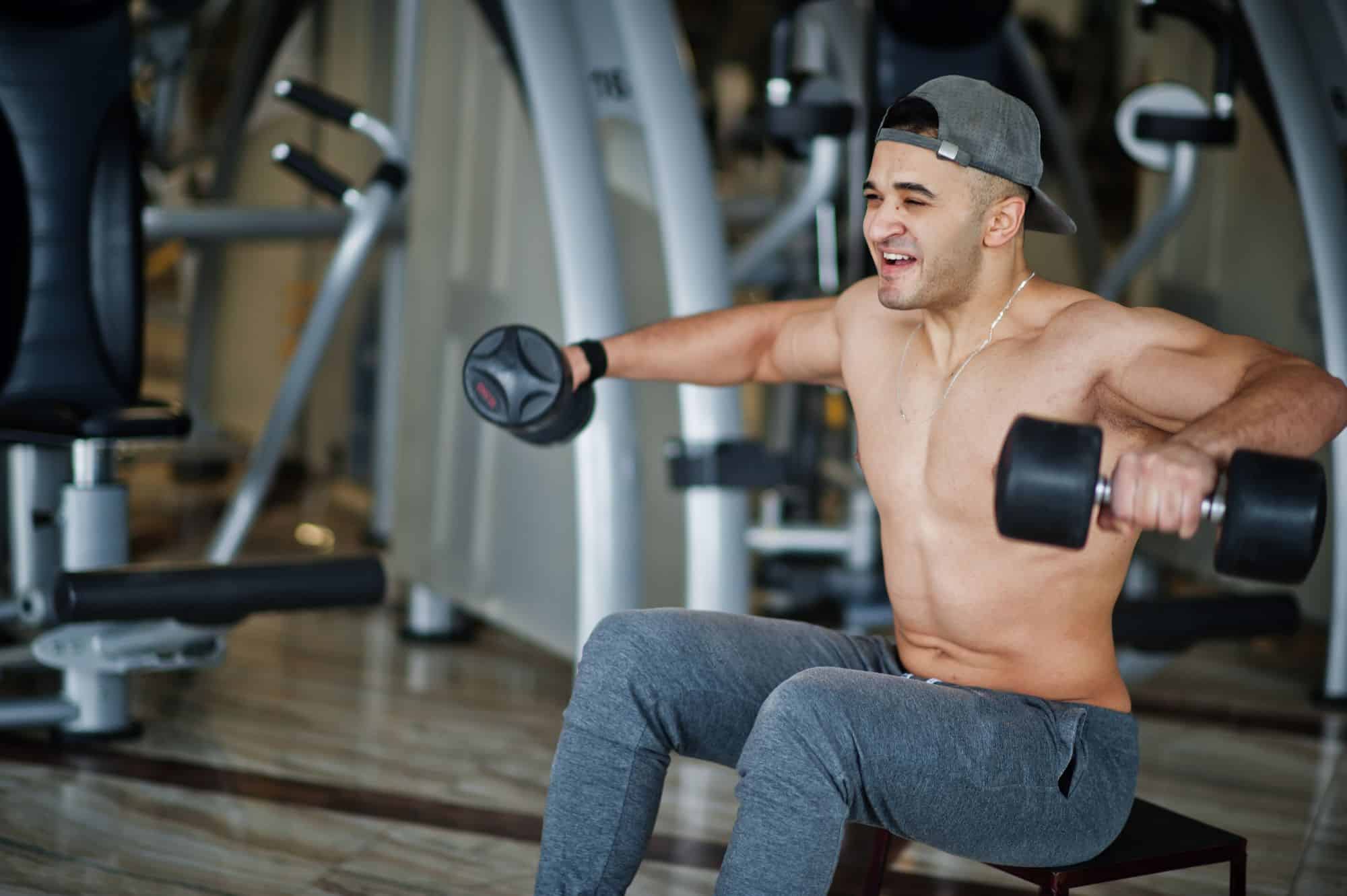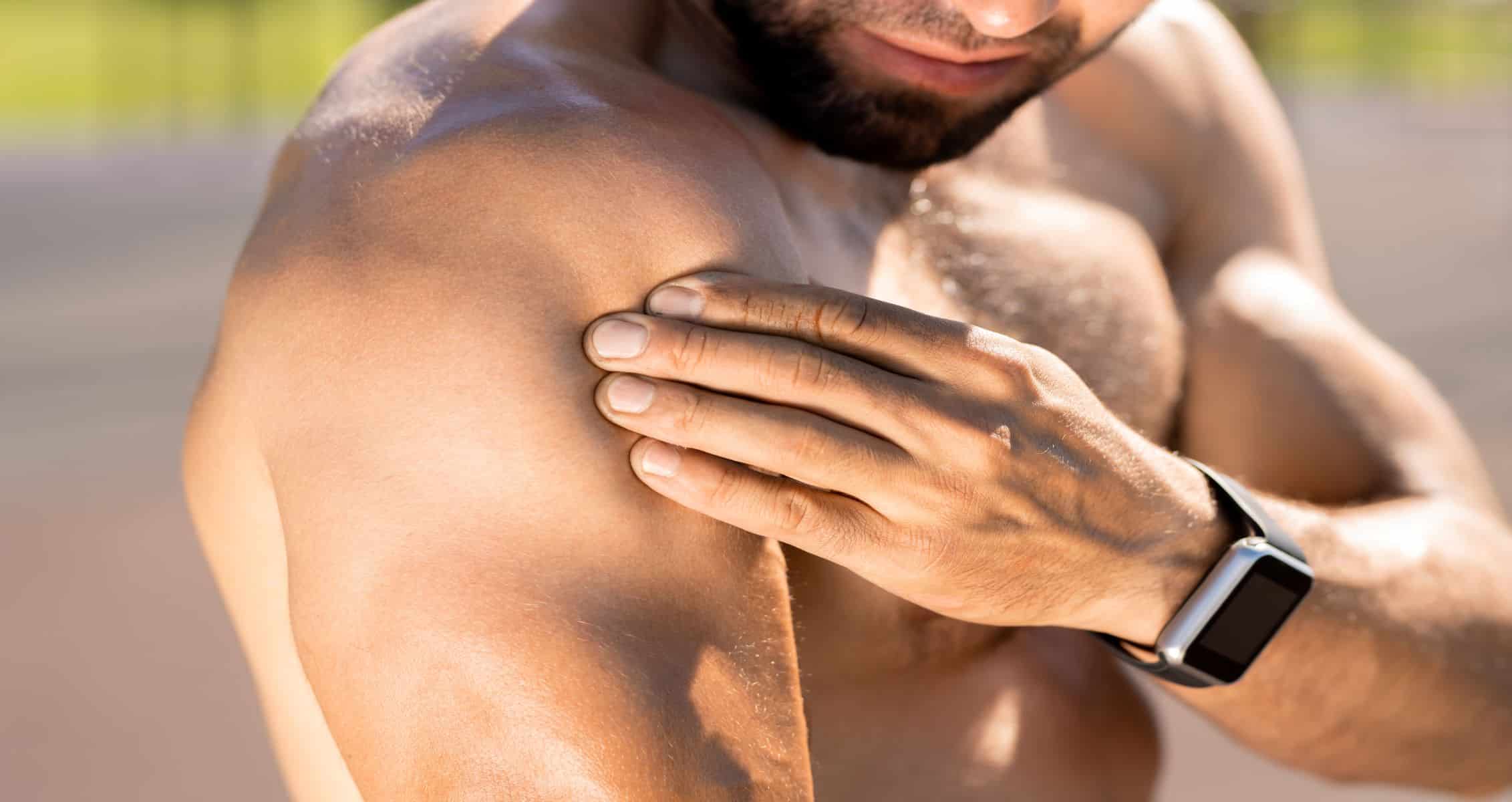Boulder Shoulders Start with Seated Lateral Raises
What is a key component in creating the iconic v-taper physique? Shoulder size. So you want to give your shoulders that 3-dimensional look, you want broad rounded shoulders, you want them to really stand out to make your physique look complete. Without those big shoulders, what will you look like? Sure your arms can be big, but without Death Star delts, they will not look fully developed. But, how do you build them?
The shoulder is composed of three different parts, the anterior deltoid, lateral deltoid, and posterior deltoid. The anterior is your front, lateral, is your side, and posterior is the rear.
There are so many exercises to do to blow your shoulders up like barbell military press, the Arnold press, rear delt flies, but you cannot forget to throw in the classic and simple, but largely effective exercise: the seated lateral raise.
In this article we are going to cover just exactly how to properly perform the seated lateral raise; what you need for the exercise, sets and reps, everything you need to know to build that broadness.
Table of Contents
- How to perform the seated lateral raise
- Benefits of the seated lateral raise
- Who should use the seated lateral raise
- FAQs
How to do the Seated Lateral Raise
There are a few things to cover as far as completing the exercise. Let’s start by checking out what you need.
The Tools
Starting off with the equipment you need to complete the seated lateral raise, there are a few simple things on the list. For starters, you need a bench. It is a seated exercise, so the bench is key here, because well, that is what you’ll be sitting on during the exercise. Next, you’ll need some dumbbells, or kettlebells if you so desire.
The Setup
Setting up the Seat: You can put the bench vertically so your back will rest against it, or you can lay the bench flat so you will be sitting upright with no back support.
Grab Your Dumbbells: You can do this exercise one handed or use both
Sit Upright: Place your feet flat on the floor and arms at your sides. Your body should be in an L shape
Raise the Weight: Raise the dumbbells, or dumbbell if you are doing a single arm variation. Bring them up to shoulder height, your hands should be level with your shoulders
Reset and Repeat: Control the weight back down to your sides and repeat this motion.
Pro Tip: For a visual representation of the exercise check out this video from Tiger Fitness on the seated lateral raise:
Sets and Reps
The seated lateral raise is not a lift to be going too heavy on. It is something you want good form, and controlled reps (for the most part but we will cover this later). In fact, it is more often recommended to go lighter, with higher reps and more controlled form. The medial head of the deltoid is not a large muscle, so it does not require massive loads to grow.
Simply put, you can try out 3-4 sets of 15-20 controlled reps. If you are more experienced and have a good mind to muscle connection, you can increase the weight and focus on sets of 12-15 reps.
If you are more advanced, you can maybe even kick it up a notch and do sets of 10-12, then take your sets to failure, or do partial reps after your full reps are completed. It all depends on your goals as far as strength and hypertrophy.
Benefits of the Seated Lateral Raise
There are plenty of benefits that stem from such a simple movement. The seated lateral raise brings not only size and isolation, but also health benefits to the table. Let’s dive in.
Muscular Hypertrophy
As stated before, if hypertrophy is your goal and you want to build boulder shoulders, the seated lateral raise is a great incorporation. There are so many exercises that blast the front and rear delts, but seated lateral raises build up that middle part of the delt, the part that is heavily associated with creating a more v-tapered look in the physique.
Specific Muscle Targeting
Being that the shoulder is made up of three distinct parts, all of them need to be hit individually in order to grow. The seated lateral raise is a great isolation exercise for the middle part (lateral deltoid) of the shoulder, which can be tricky to hit sometimes. If you are performing your seated lateral raises properly, that middle part of your delt will get absolutely demolished and have no choice but to grow.
Shoulder Health
You always want a healthy body. Healthy shoulders are a huge plus because you use your shoulders for so much throughout the day, maybe even without realizing it. Someone with perfectly healthy shoulders is able to perform all ranges of motion painlessly and with stability.
The seated lateral raise challenges and stimulates shoulder stability, in the rotator cuff in particular, as well as the range of motion. This contributes to overall shoulder health.
Who Should Use the Seated Lateral Raise?
Quite honestly, there is no real limit or restriction on who should or should not incorporate this exercise into their regiment. Still, let’s explore the different demographics.
Bodybuilders
A bodybuilder is judged on their physique, and if that physique is not complete, then the judging will more than likely not be in their favor. One thing sought after in the sport of bodybuilding is the v-taper, and as discussed before, the v-taper is greatly contributed to through developed shoulders. The seated lateral raise can be a key component in developing the hypertrophy of the shoulders and pushing them to become more filled out to achieve that iconic v-shape.
Weightlifting Athletes
The weightlifting demographic can be comprised of powerlifters, crossfitters, Olympic lifters; athletes that are overhead pressing weight in some way. Being that the seated lateral raise can contribute to overall shoulder health, it could be a good idea for athletes that focus on heavy overhead presses to incorporate these into their programming. The seated lateral raise can also serve as a nice alternative to overhead pressing to still gain/maintain muscle in the shoulders without beating down the shoulders as much as a movement like an overhead press.
The Average Gym Goer
Sure, athletes like bodybuilders and weightlifters can benefit from the seated lateral raise, but what about the people just in the gym to stay in shape, be healthy, or look good? Yes! The seated lateral raise is something that everyone can benefit from, no matter your status in the gym. Training shoulders can be intimidating to some as there are so many movements to hit all three heads. The lateral raise is great, simple movement for getting started and getting those shoulders pumped up and developing the overall muscle.
Seated Lateral Raise FAQs
The seated lateral raise is a relatively simple exercise, yes, but you still may have some questions surrounding the movement that you want answered. So, let’s take a look.
Partial Reps and Sets to Failure
Is it a good idea to perform partial reps, or even take your sets to failure when performing the seated lateral raise? Actually, on this movement, it could be beneficial to perform partial reps and sets to failure.
Once you are fatigued from completing the movement with a full range of motion, you can perform partials. This is done by moving the weights six to eight inches from your sides but keeping the tension on the lateral head of the shoulders. You can do this for a set number of reps, or do it until you cannot anymore.
Training Tip: Check out this video from the late John Meadows on doing partial reps during side lateral raises:
How Often can I do Seated Lateral Raises
This is heavily dependent on your experience in the gym. If you are new to the gym, one to two times per week for the movement is plenty of stimulation to a muscle that is rather small. As you grow more experienced in the gym, you may need to increase frequency to see progression. But, if you are too sore, it is best to rest before hitting some seated lateral raises again!
More on Shoulders
Seated lateral raises are only one movement for your shoulders, but there are plenty more to choose from! Don’t miss out on the rest of our shoulder workouts:
Side Lateral Dumbbell Raise – Exercise Guide
Front Dumbbell Raise – Exercise Guide
Seated Dumbbell Shoulder Press – Exercise Guide
References
Deltoid muscles: What are they, anatomy, Location & Function. Cleveland Clinic. (n.d.). Retrieved August 18, 2022, from https://my.clevelandclinic.org/health/body/21875-deltoid-muscles










